Remembering The Masters
Kyabjé Dodrupchen Rinpoche was among the most important Tibetan masters of this time, in particular of the Nyingma and Dzogchen traditions. As the fourth incarnation of Dodrupchen Jikmé Trinlé Özer, the heart-son of Jikmé Lingpa who revealed the Longchen Nyingtik cycle, Dodrupchen Rinpoche was the principal holder of the Longchen Nyingtik teachings.
The name Dodrupchen, meaning “The Great Adept (Mahasiddha) from the Do (Valley)”, was given to the First Dodrupchen by the Tibetan Government after he dispelled the danger of an invasion by Nepalese Gurkha forces. The Dodrupchen line of incarnations traces it origin back to Prince Murum Tsenpo, the son of the Dharma king Trisong Detsen who was the root incarnation of Jikmé Lingpa.
Until his escape from Tibet to Sikkim in 1957, Kyabje Dodrupchen Rinpoche spread the Dharma especially in Eastern Tibet. He was the administrative and spiritual head of Dodrupchen monastery, and much of his energy went towards the printing and distribution of dharma texts. Through his efforts copies of the Seven Treasuries of Longchenpa spread in the Golok region. He built images of the lineage masters of the innermost secret cycle of Dzogchen teachings, and he also gave transmissions of kama and terma teachings to thousands of people in Eastern Tibet.
Following his escape from Tibet, he settled in Gangtok, Sikkim. Once again he sponsored the printing of many books, including Longchenpa's Seven Treasuries and Trilogy of Finding Comfort and Ease. He gave many empowerments, transmissions and teachings in Sikkim, where he has two monasteries, in Bhutan, where he also heads a monastery, and in India and Nepal.
A master whose quiet, gentle and unassuming demeanour is complemented by a tremendous presence, Dodrupchen Rinpoche attended to the everyday spiritual needs of the people of Sikkim, and personally looked after the welfare of over a thousand monks in his care. Tulku Thondup says that the goal of all Dodrupchen’s efforts was to serve others, to make a difference, to make dharma accessible, without any personal expectation or interest in fame or glory. People would travel to Sikkim from all over the world to receive his blessing and spend a brief moment in his presence.
He stablished a dharma centre named Mahasiddha Nyingmapa centre in Massachusetts, USA, in 1973 which he visited every other year. He also visited and taught in Britain, France and Switzerland.
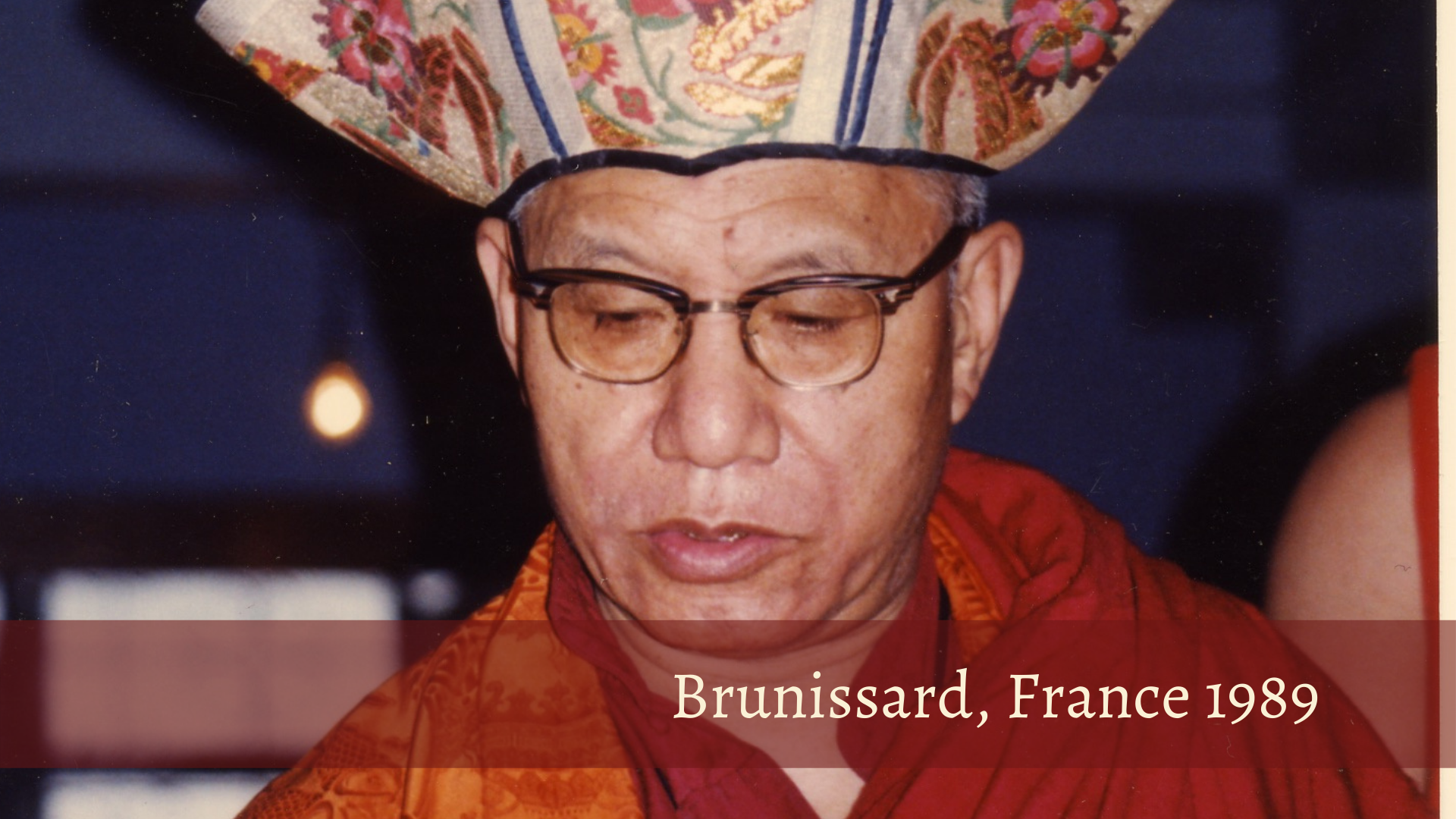
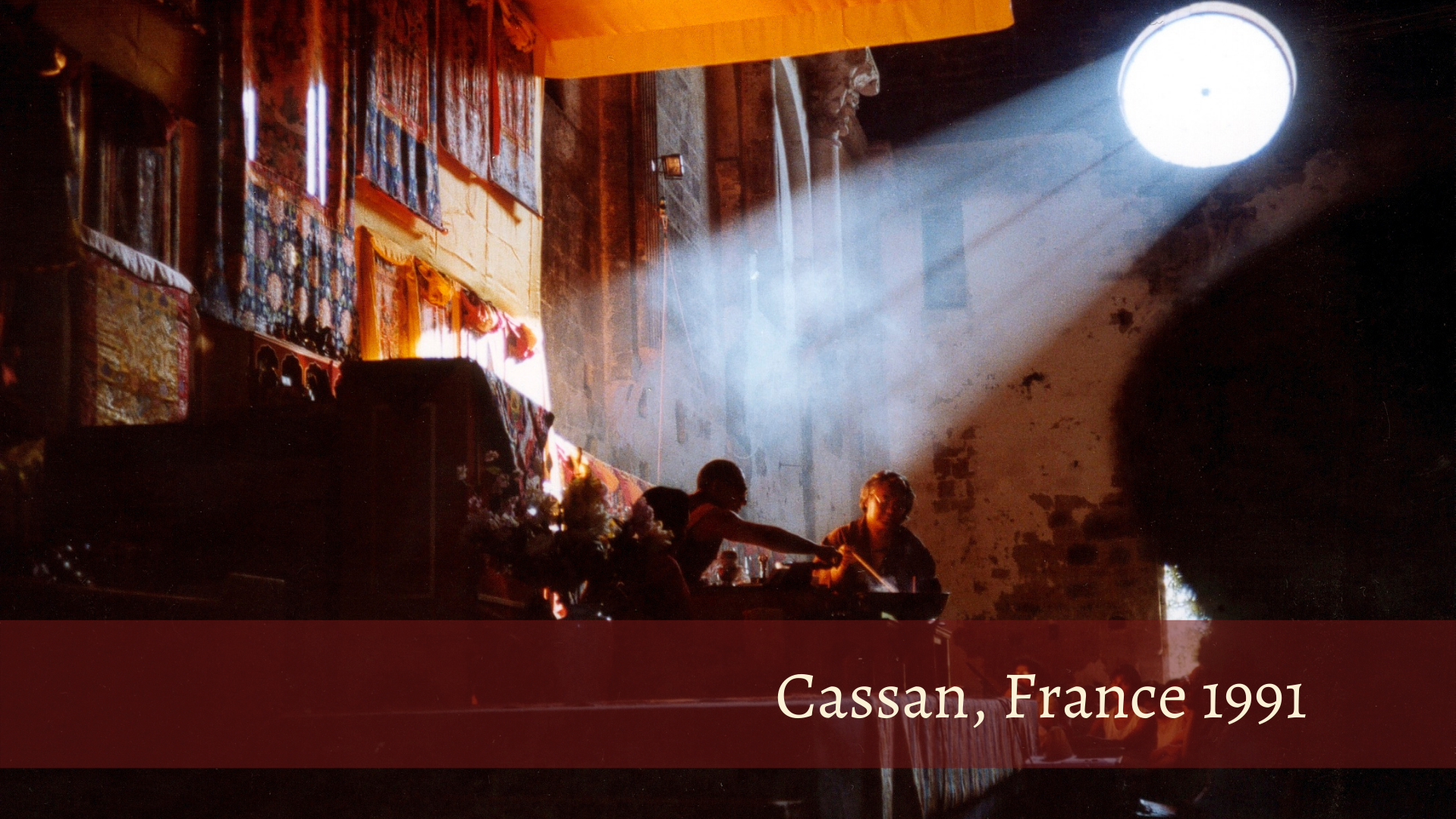
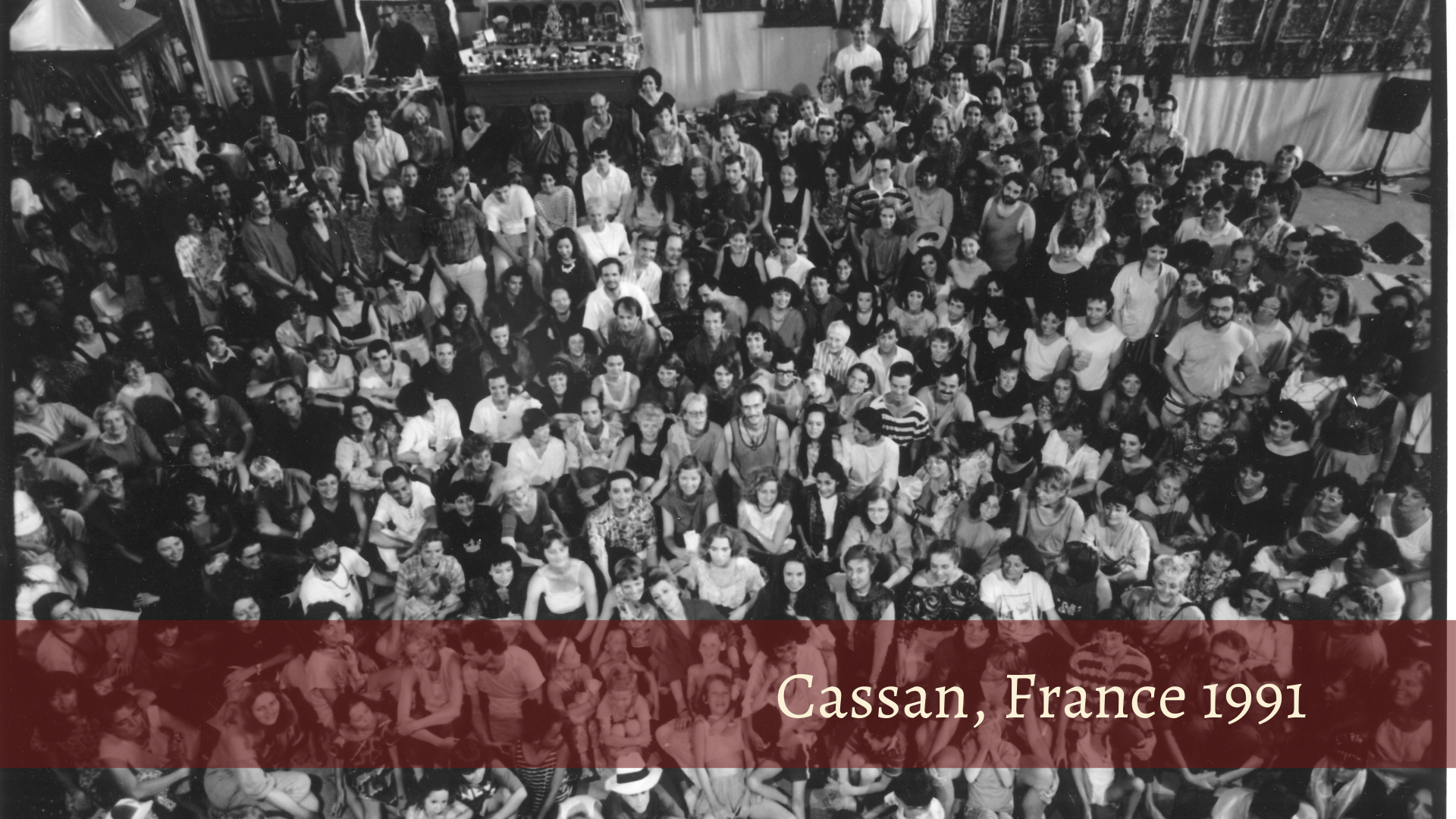
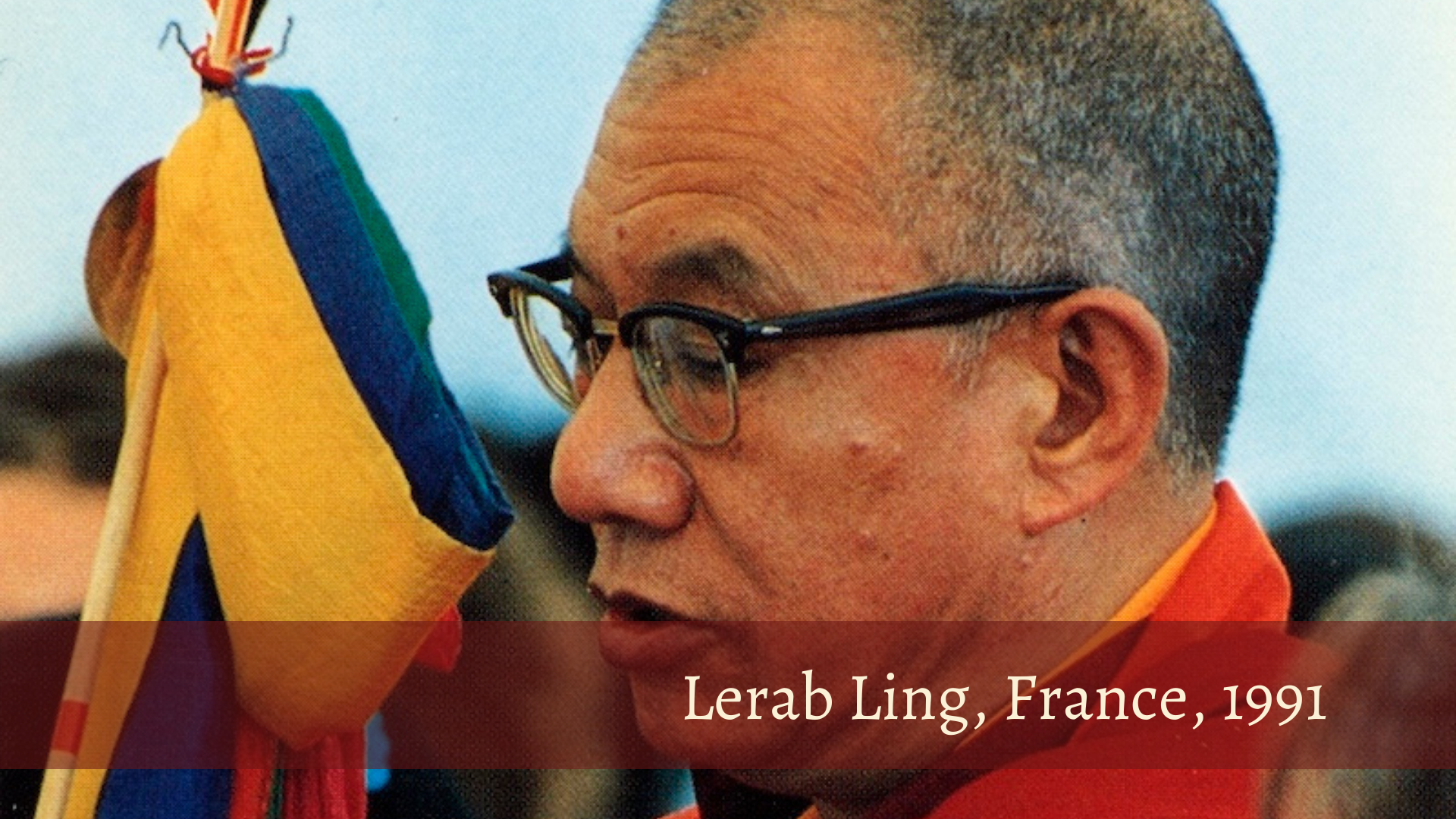
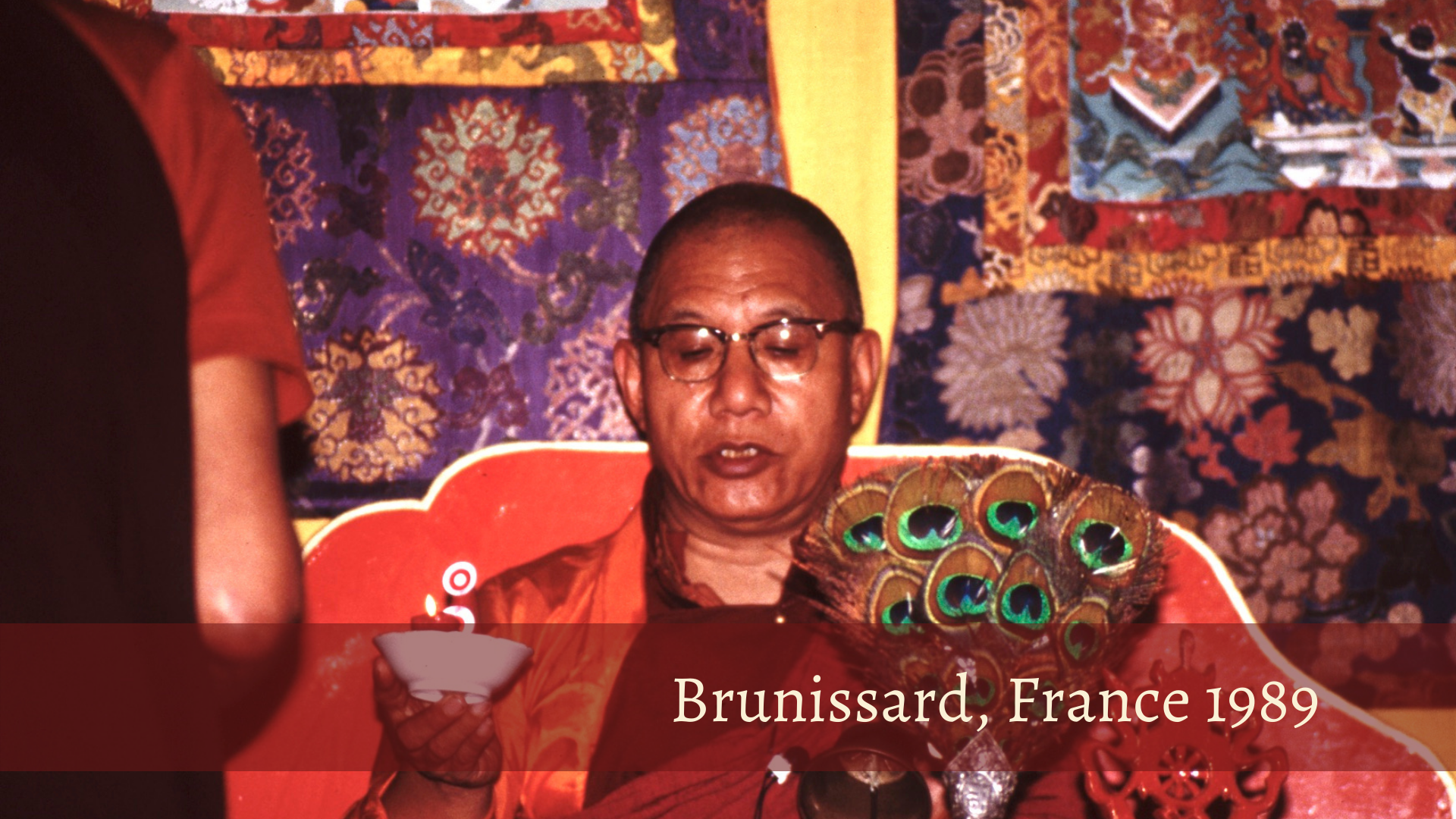

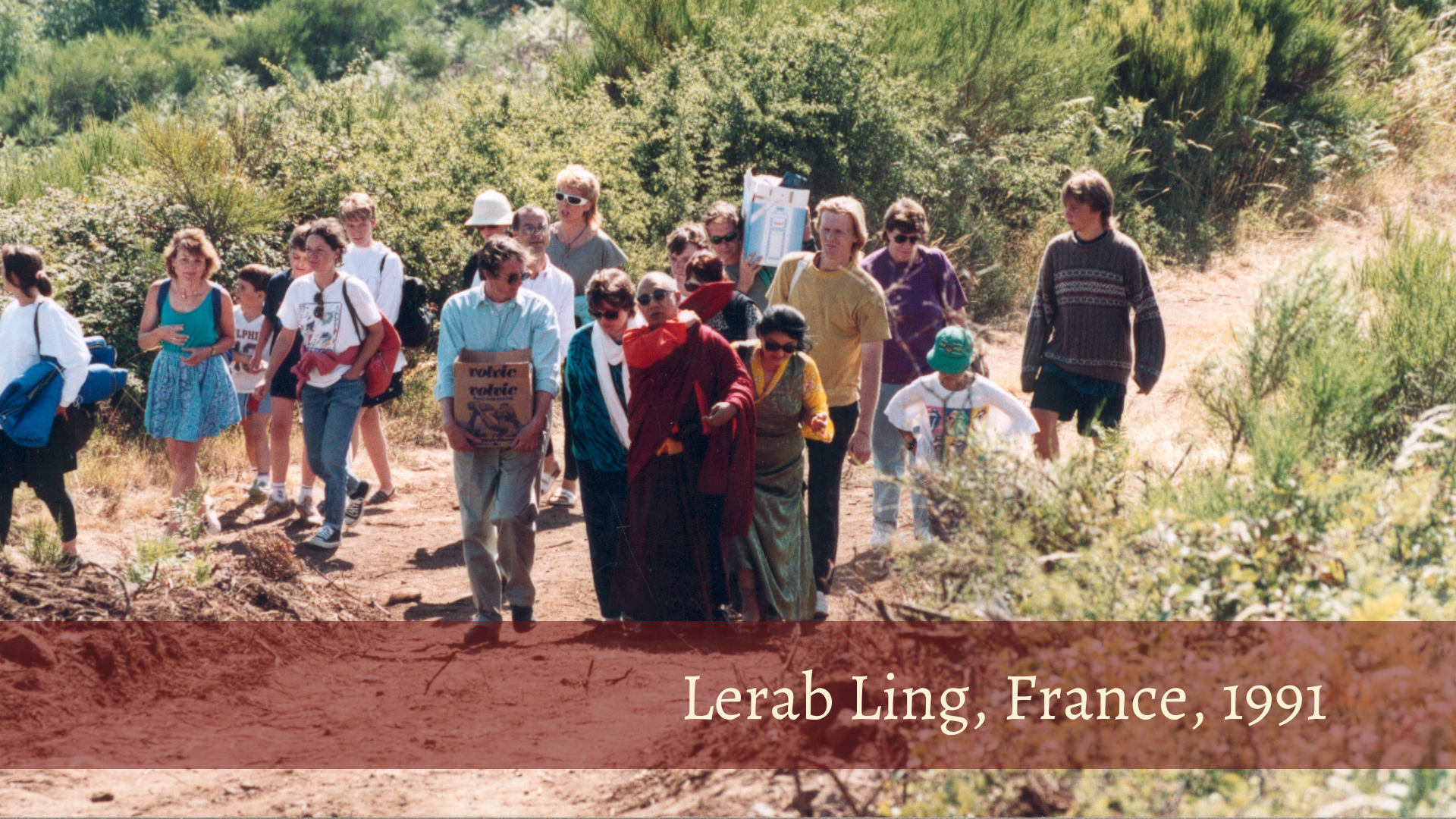

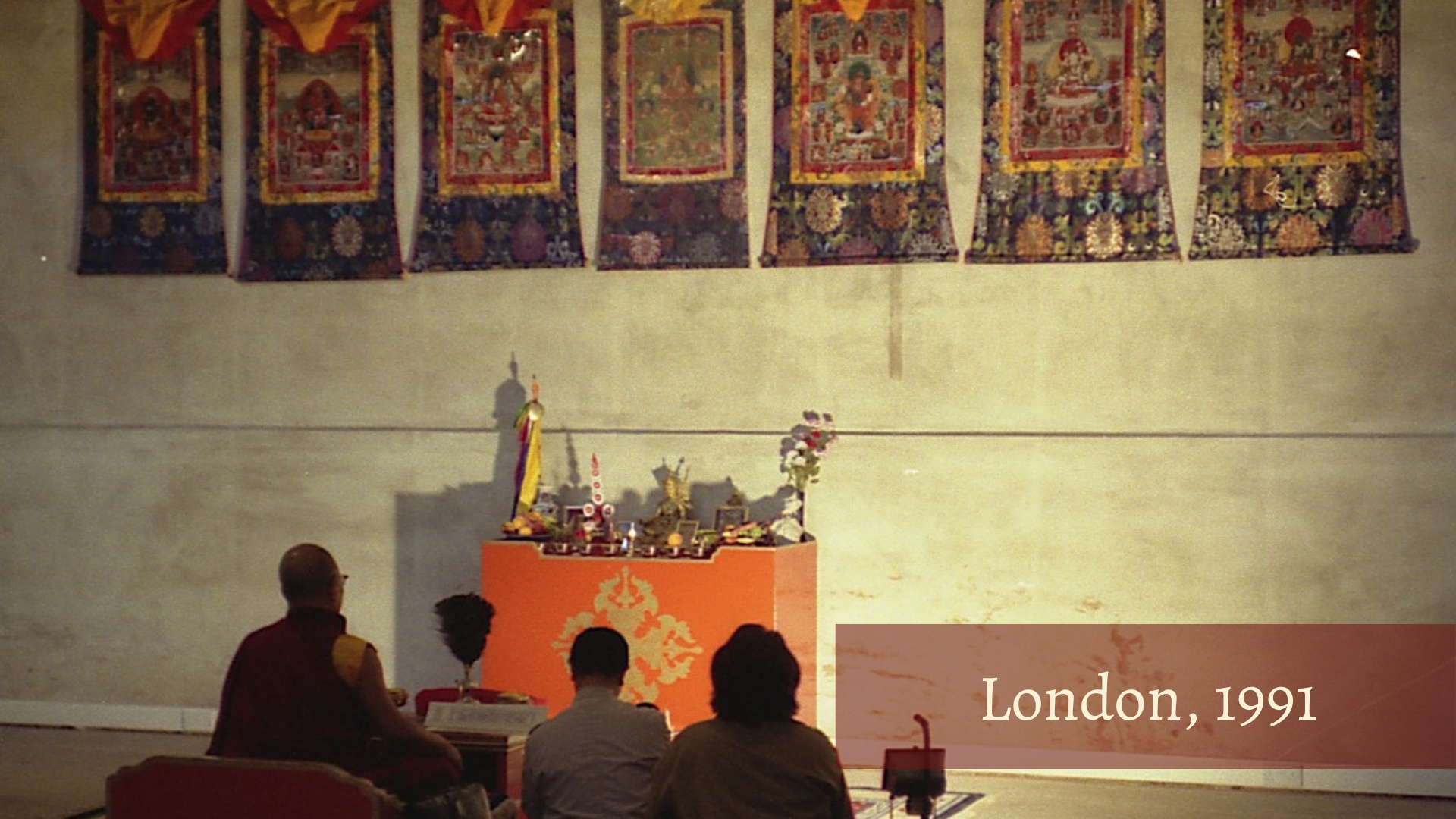
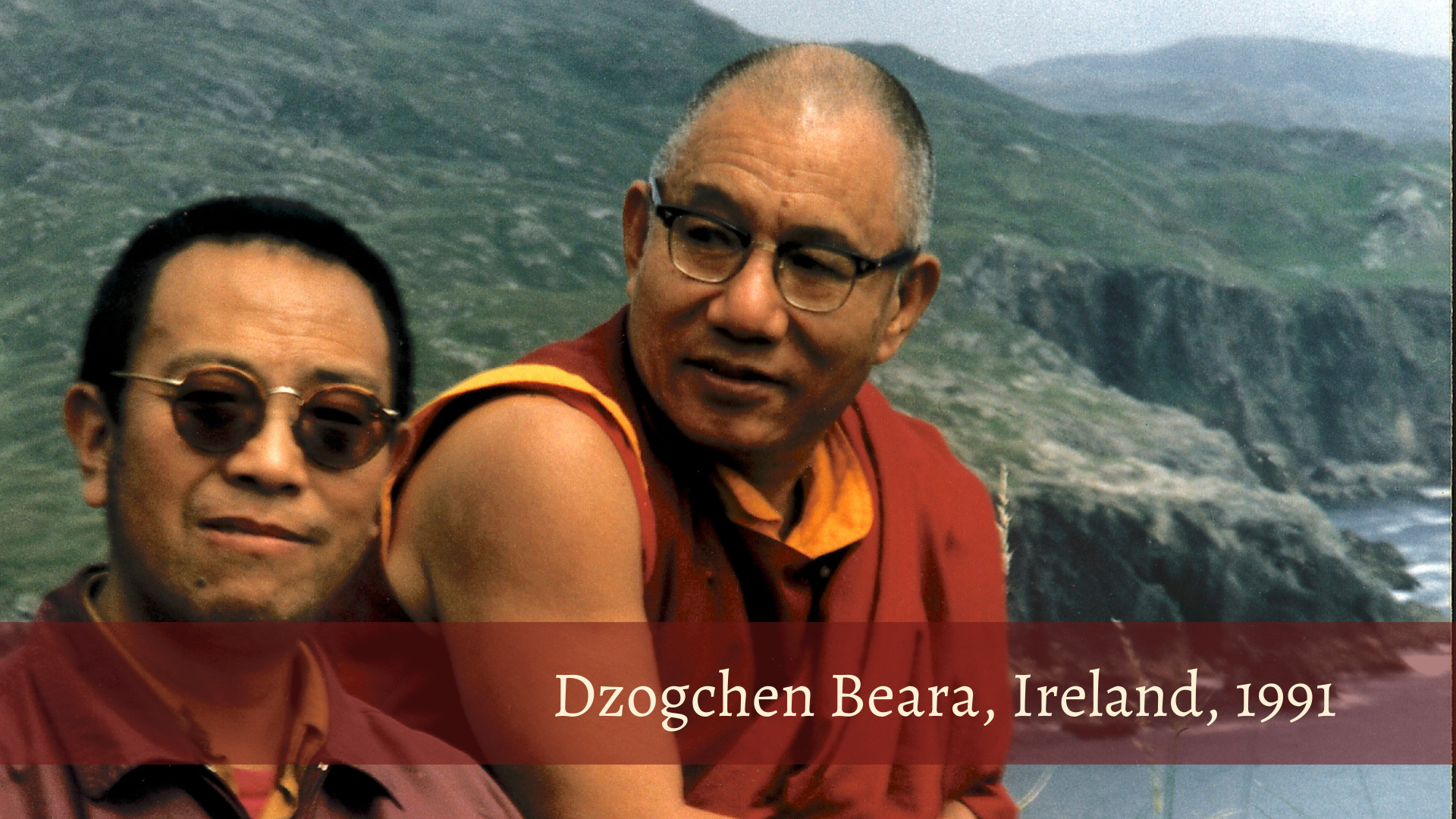




Kyabjé Rinpoche’s connection with Rigpa began as early as 1975 when he granted the empowerment of Rigdzin Düpa at Sogyal Rinpoche's request in London. In 1989 he was present at Rigpa's summer retreat at Brunissard, France along with Dzogchen Rinpoche, Nyoshul Khen Rinpoche and Khandro Tsering Chodron. In 1991, he taught at Rigpa’s retreat at Chateau de Cassan in France, he was the first lama to bless the land which became Rigpa’s retreat centre in France, Lerab Ling, he visited and blessed Rigpa’s retreat centre in Ireland, Dzogchen Beara as well as the new London Centre.
Kyabjé Dodrupchen Rinpoche entered into parinirvana on 25 January, 2022.
Prayers for the rebirth of Kyabjé Dodrupchen Rinpoche are available on Lotsawa House
Read more about Dodrupchen Rinpoche here
Find texts by Dodrupchen Rinpoche here
2021 marks the 10th anniversary since the passing of Kyabjé Trulshik Rinpoche.
Trulshik Rinpoche was one of the most highly revered figures of Tibetan Buddhism in recent times. An exemplary holder of the Vinaya tradition, he was cherished as a heart-son by both Kyabjé Dudjom Rinpoche and Kyabjé Dilgo Khyentse Rinpoche, and became a beloved teacher of His Holiness the Dalai Lama and many others and in 2010 the head of the Nyingma school.
Rinpoche was recognized in early childhood as the reincarnation of Tertön Dongak Lingpa Kunzang Tongdrol Dorje, the discoverer of the renowned Yangti Nakpo collection of Dzogchen teachings. Dongak Lingpa was, in fact, the latest in a long line of illustrious masters, thirty in total, counted among Trulshik Rinpoche’s previous incarnations. These include the Buddha’s cousin and close disciple, Ananda; the learned Madhyamika scholar, Aryadeva; Thönmi Sambhota, inventor of the Tibetan script; the great abbot- scholar Shantarakshita; the peerless translator Vairotsana; and Milarepa’s renowned student, Rechung Dorje Drak.
In 2010, Rinpoche became the fifth head of the Nyingma school, succeeding Kyabjé Minling Trichen Rinpoche.
Throughout his life, Trulshik Rinpoche made an immense contribution to the Ngagyur Nyingma tradition, especially in its monastic form. It is said, for example, that he ordained more than ten thousand monks and nuns in the years after coming into exile. He was also a model practitioner, who spent an astounding sixty years of his life in retreat.
Rinpoche oversaw the reconstruction of his monastery at Thubten Chöling, and the construction of a new monastery, Dzarong Mindrol Thubten Dongak Chöling, near Swayambhunath in Kathmandu.
Rinpoche’s writings, offer a wealth of advice and inspiration in the form of commentaries, sadhanas, praises and instructions, all written in a clear, accessible, and often poetic style.
Rinpoche’s have teachings, transmissions and empowerments in Rigpa on a number of occasions, with his final visit to Lerab Ling in December 2005. This was the first major event to take place in the newly completed temple—fittingly, as he had offered so much invaluable advice at every stage of its construction. It was Kyabjé Rinpoche’s arrival and his presence there that truly brought everything to life and made it complete.
At the time of Trulshik Rinpoche’s passing, Sogyal Rinpoche told a group of students in Berlin:
“Trulshik Rinpoche was one of our root lamas—a jewel in the crown of the Rigpa sangha. Although his passing is sad news, we must remember that such great masters are never separate from us and from the nature of our minds.”
Everyone who had the immense good fortune to meet Rinpoche and receive teachings, oral transmissions and empowerments from him will never forget his kindness and generosity. His captivating presence and the atmosphere of warmth, peace and lightness that surrounded him left a deep and lasting impression on all he encountered.
Read the full tribute to Trulshik Rinpoche in the Rigpa View Magazine here.
For a collection of texts about and by Kyabjé Trulshik Rinpoche, visit Lotsawa House.
Read more about Trulshik’s Rinpoche here.
2021 marks the 10th anniversary since the passing of the ‘Queen of the Dakinis’ Khandro Tsering Chödrön.
Khandro was loved and respected as one of the great practitioners of Tibetan Buddhism in recent times. She was an inspiration and source of blessings to Buddhist practitioners everywhere.
“Khandro Tsering Chödrön’s exceptional wisdom, grace and compassion inspired so many of us. We aspire to follow her example.” Jetsün Khandro Rinpoche
Khandro was the spiritual wife of Jamyang Khyentse Chökyi Lodrö—and she was a true dakini, loved and respected by all the masters, including His Holiness the Dalai Lama and Dilgo Khyentse Rinpoche. Khyentse Rinpoche called her the ‘Queen of the Dakinis’.
“As Jamyang Khyentse’s spiritual consort, Khandro Tsering Chödrön provided a profound example of devotion and practice, inspiring many generations of masters and students. Her own humility and gentleness invoked the same qualities in all who were touched by her. Khandrola’s beautiful spirit manifested as a most profound spiritual achievement, enriching the world with her presence.” Dzogchen Ponlop Rinpoche
A blessing simply to be in her presence
Khandro spent the final years of her life at Lerab Ling, France with her nephew Sogyal Rinpoche and her sister Mayumla Tsering Wangmo. She inspired everyone she met with her wisdom, grace and compassion, and all were struck by the atmosphere that she created simply through her presence.
“She was extremely kind and possessed all the qualities of a genuine dakini described in the tantras. Her voice was beautiful, and whoever heard it was instantly captivated. In terms of her mind, she practised and perfected the teaching of Dzogpachenpo. She had not the slightest attachment or desire for money or wealth.” Orgyen Tobgyal Rinpoche
“There are many khandros, but she really had the most extraordinary qualities. Usually someone who is very beautiful, very young, and also the consort of a very high lama, might have a lot of pride. But Khandro-la didn’t have any kind of pride whatsoever. She was very humble, kind and respectful towards everybody. Another very important quality was that she never had any attachment to wealth and possessions. She kept her life very simple. These were her great qualities.” Alak Zenkar Rinpoche
Those who cared for her and spent time with her in the last years of her life said: “Khandro-la’s very being was a blessing to all who came in contact with her, because in one glimpse, one could receive this profound teaching from her, just because of who she was and how she was.” Another said, “To be with Khandro was like coming home. It was a feeling of freedom; of resting in yourself, of being content with yourself, and of being completely happy.”
Many personal retreatants who came to Lerab Ling merely upon seeing a photograph of her were struck by her presence and blessing—even if they were not Buddhist practitioners and had no knowledge who she was.
Loved and respected by many great masters
The immense respect and devotion that many masters and practitioners had for Khandro was profoundly evident following her passing. In the days before she passed away, eminent Tibetan Buddhist teachers came to visit her, as messages and tributes poured in from around the world, and ceremonies were conducted in her honour at monasteries in Tibet, India, Nepal and Bhutan. The dungshyü held after her passing at Lerab Ling and the ceremony to consecrate her memorial stupa in 2014, were attended by several thousand people, led by some of the foremost masters of the Tibetan Buddhist tradition including His Holiness Kyapgon Sakya Gongma Trichen Rinpoche, His Holiness Sakya Trizin, Khondung Gyana Vajra Rinpoche, Dzongsar Khyentse Rinpoche, Jigme Khyentse Rinpoche, Pema Wangyal Rinpoche, Orgyen Tobgyal Rinpoche, Rangdrol Rinpoche and Tulku Rigdzin Pema.
His Holiness Dalai Lama and Khandro Tsering Chödrön, Lerab Ling 2008
His Holiness the Sakya Trichen with Khandro Tsering Chödrön, Lerab Ling
The vast benefits and blessings of Khandro’s memorial stupa
Since the time of the Buddha himself, it has been customary to construct stupas to enshrine the relics of great masters—as symbols of their enlightened mind and because a stupa is a powerful means through which these teachers can continue to bring immeasurable benefit in the future. It is said that simply for us to set eyes on a stupa is enough to create a connection that will eventually lead to our enlightenment.
Khandro’s memorial stupa contains relics of Jamyang Khyentse Chökyi Lodrö and Khandro, along with countless scriptures and other precious objects. One of the most holy relics contained in the stupa is a relic of Tertön Namchö Mingyur Dorje (1645-1667). Tulku Rigdzin Pema who built the stupa explained that there are four stupas around the world that contain relics of Namchö Mingyur Dorje, and there are many accounts of people being healed from incurable illnesses after circumambulating these stupas many times. Moreover, as Tulku Rigdzin Pema shared, Khandro’s stupa was built to bring peace and happiness to France, and the world at large and especially for this region where the stupa is located. And it is built so that the students may be able to eliminate obscurations and negativity and accomplish the two accumulations.
“The stupa was built to bring peace and happiness to France and the world at large … and so that students can eliminate all obscurations to accomplishing the two accumulations.” Tulku Rigdzin Pema
The stupa built in memory of Khandro Tsering Chödrön
Her Blessings Pervade Lerab Ling
Lerab Ling will forever be blessed by Khandro’s presence and her passing in Lerab Ling. As Orgyen Tobgyal Rinpoche explained: “she showed all the signs of accomplishment as described in the teachings, and when she passed away her mind merged naturally into that great expanse of the buddha nature, like pouring water into water. Then she remained for several days in a state of meditation or tukdam. A great practitioner such as her merges the clear light of the path they have recognized during their practice in life with the clear light of the ground that dawns at the moment of death. It is said that a Dzogchen practitioner who is able to merge the luminosities in tukdam is accomplishing aeons of practice in a single instant, and goes on to attain enlightenment.”
Sogyal Rinpoche observed: “On account of her humility, Khandro was never one to give blessings to others. In 2006, she came to Lerab Ling and she made it her home, and the very fact that she lived here, I always felt, was itself the greatest blessing of all. Because of her presence, we all could feel that Jamyang Khyentse Chökyi Lodrö and Dilgo Khyentse Rinpoche were both here as well. Now that she has dissolved into the dharmadhatu, she has blessed Lerab Ling even more completely, for a place where a great master like her has passed away into the ultimate nature becomes extremely sacred, and utterly charged with blessings.”
“A place where a great master like her has passed away into the ultimate nature becomes extremely sacred, and utterly charged with blessings” Sogyal Rinpoche
See more on Khandro’s memorial Blog ‘In Memory of Khandro Tsering Chödrön’ blog and Khandro Tsering Chödrön: In Memory of an Extraordinary Buddhist Master: Huffington Post
Jamyang Khyentse Chökyi Lodrö was an activity incarnation of Jamyang Khyentse Wangpo, and perhaps the most outstanding Tibetan master of the twentieth century. Authority on all traditions and holder of all lineages, he was the heart of the Rimé (ecumenical) movement in Tibet. He was the master who recognised Sogyal Rinpoche as the incarnation of Tertön Sogyal and brought him up.
In 2009, as part of the celebrations for the 50th anniversary of his passing, some Rigpa students offered this beautiful short film on “the master of masters”.
August 2019 marked 20 years since the great master of Dzogpachenpo, Nyoshul Khenpo Jamyang Dorjé, passed away in France.
An authority on the teachings of Longchenpa
Nyoshul Khen Rinpoche or Nyoshul Khenpo Jamyang Dorjé, was such a consummate master of Dzogpachenpo, and such an authority on the teachings of Longchenpa, that his disciples regarded him as Longchenpa in the flesh.
Often he would speak of the ultimate significance of this great master, and the power of his blessing:
“Longchenpa embodies all the buddhas and bodhisattvas of the three times and ten directions, all gurus, devas, and dakinis. What we need to realize is the actual meaning of ‘Longchenpa’, which is the essence of what is meant by ‘Being At Ease in the Nature of Mind’, Semnyi Ngalso. It was in order to exemplify and demonstrate that absolute Longchenpa that the omniscient Longchenpa manifested in our world, nearly seven hundred years ago. So by seeing his representation in form, by hearing his speech, and by remembering him, we can receive the blessing to bring about the realization of the ultimate meaning of Dzogpachenpo. He embodies the intrinsic nature and essence of Dzogpachenpo, that pervades all beings in samsara and nirvana, and so he is never separate from us. All we need to do is to open our hearts in genuine devotion, and his blessing is immediate and utterly within our reach. By praying to Longchenpa, we can awaken the intrinsic, or absolute Longchenpa within us, the wisdom of our own rigpa, present within the nature of our mind.”
Khenpo would pray constantly to Longchenpa, and would always encourage practitioners to recite this verse:
“O Longchenpa, in the depth of your compassion, your learning, and realization, You are the equal of the great sages of India, the six ornaments, and two supreme ones who beautify our world.Yet you lived as a hidden yogi, practising in forest retreats,And perfected both samsara and nirvana as dharmakaya.Immaculate Radiance, Trimé Özer, at your feet I pray:Fill me with your blessing, so that I realize the natural state, the essence of my mind!”
A teacher of many of today’s younger and western Buddhist teachers
Nyoshul Khenpo was the teacher of many of the younger generation of lamas, as well as a number of western Buddhist teachers.
Nyoshul Khenpo became one of Sogyal Rinpoche’s most beloved masters. Khen Rinpoche first taught Rigpa students in the Dordogne in the summer of 1984, after which he was present regularly and taught at many Rigpa retreats and gatherings over the next decade: in France, America, the United Kingdom and Germany, during His Holiness the Dalai Lama's teachings on Dzogchen in San Jose in 1989, Kyabje Dilgo Khyentse Rinpoche's teachings at Prapoutel in 1990, and the Dalai Lama's inauguration of Dzogchen monastery in 1992. His last visit to Lerab Ling was in the summer of 1996.
Among Khenpo’s western students were a number of Buddhist teachers, who became very devoted to him, and included prominent members of the Insight Meditation community. Sharon Salzberg, for example, wrote movingly in her book Faith:
“Khenpo was the most spacious person I’d ever met. It seemed as though the wind passed right through him and translucency was the major component in his makeup. Many times in his company I had the strange sense that we were standing in a wide open field, great empty expanses spreading out in all directions. Even if we were in a crowded little room, the walls closing us in seemed to evaporate.
Perhaps this effect was a reflection of Khenpo’s wide-open consciousness and huge unbounded heart. Being with Khenpo was the closest I’d come to experiencing transformation through just being in the presence of a realized person. Yet he was entirely unself-conscious, like a magician unattached to his own magic.”
Recollections and experiences of Nyoshul Khenpo Jamyang Dorje
Nyonshul Khenpo’s lineage and writings
Nyoshul Khenpo Jamyang Dorjé was born in 1932 in the Dergé region of Kham. Khenpo counted twenty-five great masters as his principal teachers, of whom the most central in his life was Shedrup Tenpé Nyima, the reincarnation of Nyoshul Lungtok. From him, from the age of seventeen at Nyoshul monastery he began to receive the teachings of Longchen Nyingtik and particularly the Great Oral Lineage of Pith Instructions of Dzogpachenpo.
This became Khenpo’s special lineage, a lineage which passed back to the Primordial Buddha in an unbroken line, through such extraordinary masters as Khenpo Ngakchung, Nyoshul Lungtok, Patrul Rinpoche, Jikmé Lingpa, Longchenpa, Vimalamitra, and Padmasambhava. Khenpo passed these teachings on to a few close disciples, as well as to a number of the greatest masters and lineage holders of his time.
Nyoshul Khenpo passed away in France in August 1999. No one who met him can ever forget his extraordinary presence or the spirit in which he taught, which embodied so perfectly the fathomless ease and vastness of Dzogpachenpo.
Written Works by Nyoshul Khen Rinpoche
A Marvelous Garland of Rare Gems: Biographies of Masters of Awareness in the Dzogchen Lineage
Nyoshul Khenpo wrote a definitive History of the Dzogchen Lineage, containing the biographies of the lineage masters, and a remarkable collection of poetic songs of realization.
Nyoshul Khenpo was a teacher of the Dharma, and not a master who was known for building many great temples or monasteries, gathering patrons or overseeing grand projects. Where he existed, and where he exists now, is in everyone’s minds and hearts, and the only material thing he left us in fact is this book, his history. He said that his temple would be this book. It is his great legacy. It took him many years to complete. He said that if anything were ever written about it, this is all it should say:
“This old lama regarded the Dzogchen teachings as immensely precious, and he wrote a two-volume history, with biographies of the lineage masters, entitled A Marvellous Garland of Rare Gems, which will be of tremendous benefit to students in the future. It is neither too high, nor too low. In future, when these things are explained, you need to know the original history. It is neither exaggerated, nor self-promoting. It simply tells what happened.”
Writings translated into English
Natural Great Perfection, translated by Lama Surya Das, Snow Lion Publications, 1995
‘A Gift To The World’ by Nyoshul Khenpo printed as an appendix in Dzogchen: Heart Essence of the Great Perfection By H.H. the Fourteenth Dalai Lama, Rigpa & Snow Lion Publications, 2000
A Marvelous Garland of Rare Gems: Biographies of Masters of Awareness in the Dzogchen Lineage, By Nyoshul Khenpo translated by Richard Barron, Padma Publishing, 2005
Nyoshul Khen Rinpoche, A Personal Homage, the introduction by Sogyal Rinpoche in the title above published separately by Rigpa. Available here in English, & German
Four Seals of Refuge: A teaching by Nyoshul Khenpo in The Crucial Points of Refuge, Rigpa 2009. Available from Zam in English, French, & German
The Fearless Lion's Roar : Profound Instructions on Dzogchen, the Great Perfection By Nyoshul Khenpo Translated by David Christensen, Snow Lion Publications, 2015
For more of Nyoshul Khenpo’s writings visit Lotsawa House, Nyoshul Khenpo series.
Writings translated into French
Le Chant d'illusion et autres poèmes, translated by Stéphane Arguillère, Paris: Gallimard, 2000.
L'Avènement de la Grande Perfection naturelle - Volume I — La Merveilleuse Guirlande de joyaux des lignées de vidyadaras, translated by Padmakara.
“There’s an endless variety of spectacles,
Like patterns all the colours of a rainbow,
Yet when examined, they’re simply the mistaken perceptions of the mind,
Amounting to no more than a dream.”


















